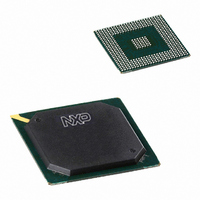PNX1501E,557 NXP Semiconductors, PNX1501E,557 Datasheet - Page 439

PNX1501E,557
Manufacturer Part Number
PNX1501E,557
Description
IC MEDIA PROC 266MHZ 456-BGA
Manufacturer
NXP Semiconductors
Datasheet
1.PNX1502EG557.pdf
(828 pages)
Specifications of PNX1501E,557
Applications
Multimedia
Core Processor
TriMedia
Controller Series
Nexperia
Interface
I²C, 2-Wire Serial
Number Of I /o
61
Voltage - Supply
1.14 V ~ 1.26 V
Operating Temperature
0°C ~ 85°C
Mounting Type
Surface Mount
Package / Case
456-BGA
Lead Free Status / RoHS Status
Lead free / RoHS Compliant
Program Memory Type
-
Ram Size
-
Other names
935274728557
PNX1501E
PNX1501E
PNX1501E
PNX1501E
Available stocks
Company
Part Number
Manufacturer
Quantity
Price
Company:
Part Number:
PNX1501E,557
Manufacturer:
NXP Semiconductors
Quantity:
10 000
- Current page: 439 of 828
- Download datasheet (8Mb)
Philips Semiconductors
Volume 1 of 1
PNX15XX_SER_3
Product data sheet
2.5.5 Horizontal Video Filters (Sampling, Scaling, Color Space Conversion)
Enabling the Dither Units
Immediately after the Dither unit is enabled or after a reset, the unit waits for the
beginning of a newly-captured image. Only then the unit starts dithering.
Once the Dither unit is operational (enabled), it keeps track of the order in which the
images arrive: we refer to the very first image at the unit dither as the even image, the
second image as the odd image, and so on. A frame here is defined as two images:
an even image followed by an odd image. This maintained state does not depend on
the selected alternation options, it is maintained as long as the Dither unit is enabled.
Any alternative activity corresponds to the internally-maintained state of a frame and
field (even or odd) and has nothing to do if the signal is coming from the top or the
bottom field.
Dithering operation also distinguishes between even and odd pixel-components of
the same type (either Y, U or V) in a line.
The first occurrence of a Y or U or V component in the first line in the first received
image is considered to be an even occurrence (or set ).
Interpolation Filter (Upsampling)
All horizontal video processing is based on equidistant sampled components. All
4:2:2 video streams, therefore, have to be upsampled before being scaled
horizontally. The interpolation FIR filter used can interpolate interspersed or co-sited
chroma samples. Mirroring of samples at the field boundaries compensate for run-in
and run-out conditions of the filter.
The following coefficients are used:
Decimation Filter (Downsampling)
After horizontal processing, the chrominance may be down-sampled to reduce
memory bandwidth or allow a higher-quality vertical processing not available
otherwise. Mirroring of samples at the field boundaries compensate for run in and run
out conditions of the filter.
The following coefficients are used:
Normal Polyphase Filter (Horizontal Scaling)
The normal polyphase filter can be used to zoom up (upscale) or downscale a video
image. Depending on the number of components, the filter is used with 6 taps (three-
component mode) or 3 taps (four-component mode).
•
•
•
•
co-sited: A=(1) and B=(-3,19,19,-3)/32
interspersed: C=(-1,5,13,-1)/16 and D=(-1,13,5,-1)/16
co-sited: low pass A=(1,2,1)/4 or sub-sample A=(0,1,0)
interspersed: B=(-3,19,19,-3)/32
Rev. 3 — 17 March 2006
Chapter 12: Video Input Processor
© Koninklijke Philips Electronics N.V. 2006. All rights reserved.
PNX15xx Series
12-12
Related parts for PNX1501E,557
Image
Part Number
Description
Manufacturer
Datasheet
Request
R
Part Number:
Description:
Manufacturer:
NXP Semiconductors
Datasheet:
Part Number:
Description:
Digital Signal Processors & Controllers (DSP, DSC) MEDIA PROCESSOR PNX15XX/266MHZ
Manufacturer:
NXP Semiconductors
Datasheet:

Part Number:
Description:
IC MEDIA PROC 266MHZ 456-BGA
Manufacturer:
NXP Semiconductors
Datasheet:
Part Number:
Description:
NXP Semiconductors designed the LPC2420/2460 microcontroller around a 16-bit/32-bitARM7TDMI-S CPU core with real-time debug interfaces that include both JTAG andembedded trace
Manufacturer:
NXP Semiconductors
Datasheet:

Part Number:
Description:
NXP Semiconductors designed the LPC2458 microcontroller around a 16-bit/32-bitARM7TDMI-S CPU core with real-time debug interfaces that include both JTAG andembedded trace
Manufacturer:
NXP Semiconductors
Datasheet:
Part Number:
Description:
NXP Semiconductors designed the LPC2468 microcontroller around a 16-bit/32-bitARM7TDMI-S CPU core with real-time debug interfaces that include both JTAG andembedded trace
Manufacturer:
NXP Semiconductors
Datasheet:
Part Number:
Description:
NXP Semiconductors designed the LPC2470 microcontroller, powered by theARM7TDMI-S core, to be a highly integrated microcontroller for a wide range ofapplications that require advanced communications and high quality graphic displays
Manufacturer:
NXP Semiconductors
Datasheet:
Part Number:
Description:
NXP Semiconductors designed the LPC2478 microcontroller, powered by theARM7TDMI-S core, to be a highly integrated microcontroller for a wide range ofapplications that require advanced communications and high quality graphic displays
Manufacturer:
NXP Semiconductors
Datasheet:
Part Number:
Description:
The Philips Semiconductors XA (eXtended Architecture) family of 16-bit single-chip microcontrollers is powerful enough to easily handle the requirements of high performance embedded applications, yet inexpensive enough to compete in the market for hi
Manufacturer:
NXP Semiconductors
Datasheet:

Part Number:
Description:
The Philips Semiconductors XA (eXtended Architecture) family of 16-bit single-chip microcontrollers is powerful enough to easily handle the requirements of high performance embedded applications, yet inexpensive enough to compete in the market for hi
Manufacturer:
NXP Semiconductors
Datasheet:
Part Number:
Description:
The XA-S3 device is a member of Philips Semiconductors? XA(eXtended Architecture) family of high performance 16-bitsingle-chip microcontrollers
Manufacturer:
NXP Semiconductors
Datasheet:

Part Number:
Description:
The NXP BlueStreak LH75401/LH75411 family consists of two low-cost 16/32-bit System-on-Chip (SoC) devices
Manufacturer:
NXP Semiconductors
Datasheet:

Part Number:
Description:
The NXP LPC3130/3131 combine an 180 MHz ARM926EJ-S CPU core, high-speed USB2
Manufacturer:
NXP Semiconductors
Datasheet:

Part Number:
Description:
The NXP LPC3141 combine a 270 MHz ARM926EJ-S CPU core, High-speed USB 2
Manufacturer:
NXP Semiconductors

Part Number:
Description:
The NXP LPC3143 combine a 270 MHz ARM926EJ-S CPU core, High-speed USB 2
Manufacturer:
NXP Semiconductors











